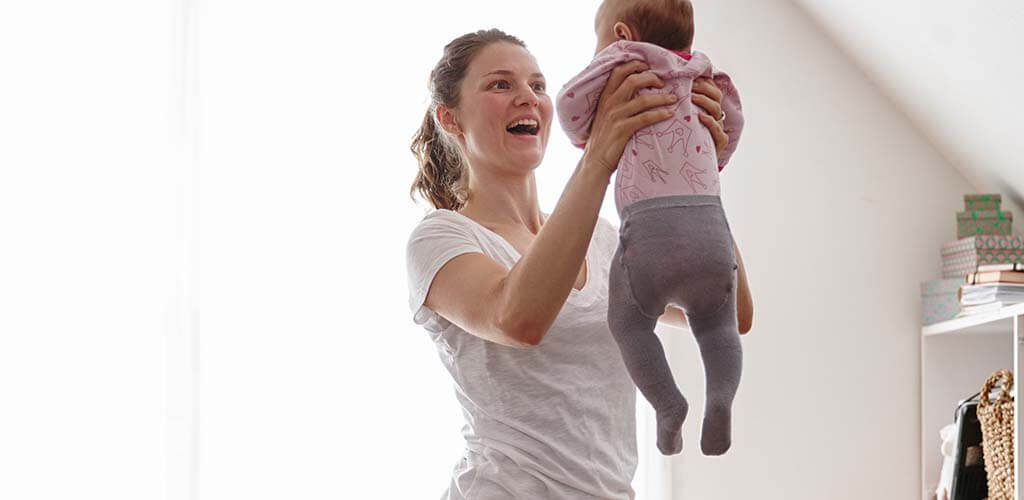Fit Tip: Postnatal Workout

When I was expecting my first child, I exercised regularly up until the day before I gave birth. During my pregnancy, I remember thinking, quite naively, that I would be ready to jump back into exercise as soon as I got the green light from my doctor. I reasoned that with proper planning I would be back into a regular routine quickly.
Then, after an unexpected emergency C-section a month early, I found myself sore, exhausted, and not having the energy to do anything other than get through each day. At my six-week appointment my OB excitedly said, “Everything looks great! I’m sure you’re ready to get back to exercise.” But the truth is, I wasn’t.
On top of still recovering from major surgery, I was tired, struggling with breastfeeding, and unable to access my core muscles. I knew if I could get myself moving beyond daily walks and rocking the baby to sleep, I would feel better, so gradually I started to get myself moving.
Like prenatal exercise, much has changed over the years in recommended postnatal exercise. The marketing has shifted (thankfully) from “Getting your pre-baby body back!” to focusing on regaining strength and function and exercising for mental health. While most women get some general recommendations from their doctor or midwife, returning to exercise can be daunting and we aren’t always quite sure where to start. So, here are a few guidelines to help.

- Talk to your doctor or midwife to know when it is safe begin exercising post delivery.
Soon after birth, you can start walking, gentle stretching and core breathing, but it’s generally recommended to wait until your follow up appointment to get clearance for other workouts. Usually around 6 weeks.
- Start slow and listen to your body.
No matter what your fitness level before baby, remember your body went through a huge change during pregnancy so things will feel different. Once you get the okay from your provider, start back with lower intensity and lower loads, and then gradually work your way up. Going too hard, too fast can actually set you back in your recovery, or cause complications.
- Evaluate your pelvic floor and core.
Ask your doctor or midwife to check for diastasis recti (abdominal separation), and if needed, get a referral to see a Pelvic Floor Physical Therapist.
- Focus on training your deep core first.
Our core muscles experience the most changes during pregnancy. While it may be tempting to jump back into crunches and planks right away, take your time. Focus on your Transverse Abdomninus deep core and pelvic floor with TA Breathing (shown in the video below), gentle kegels, and static engagement exercises like dead bugs, bridges, or side planks.
- Hydrate well and fuel your body with food.
Set yourself up for success by getting lots of water before, during, and after your workouts, especially if you are breastfeeding.
- Give yourself grace.
Your workouts will be different postpartum, both due to the changes in your body AND your life. That’s okay! While we long to look and feel normal again, remember to be kind to yourself. Your body did something amazing! You are already strong (hello, holding that baby ALL day), and you will regain strength and function with time.
Need more guidance? Check out this quick postnatal workout below.
Postnatal Workout
Do each for 30 seconds, then repeat.
- TA Breathing
- Bentover Row
- Dead Lift
- Plie Squat (optional shoulder press)
- Toe Taps/Dead Bug
- Bridge
You may also like:
Fit Tip: Post-Pregnancy Exercises for Your Abs

